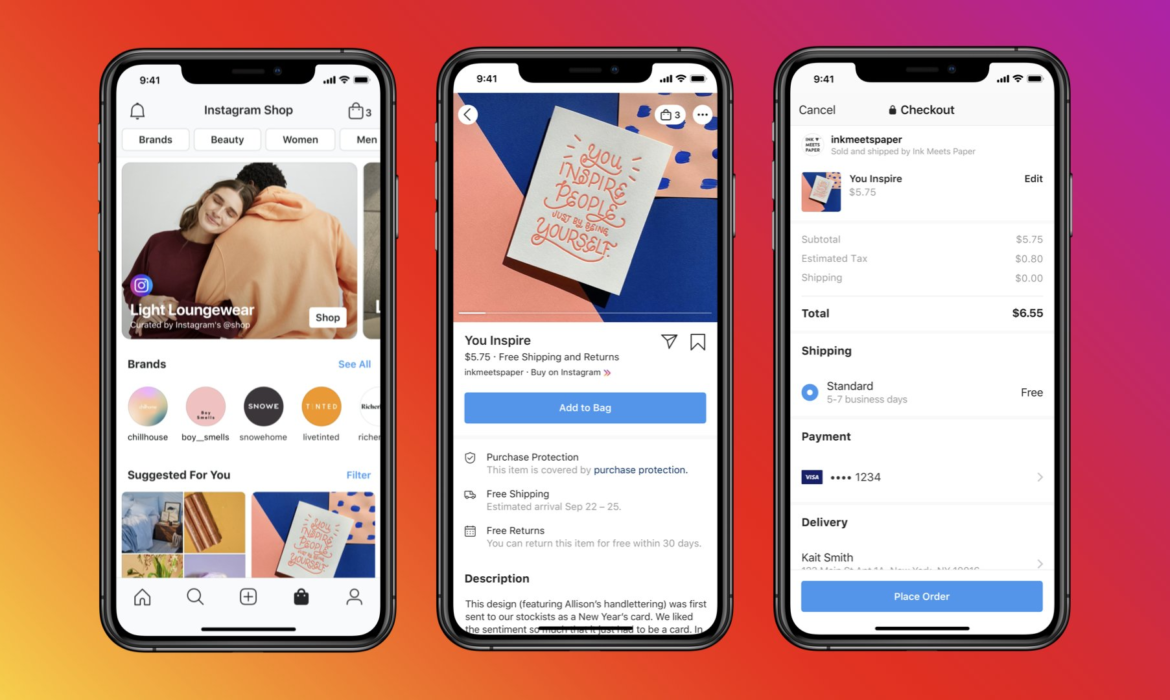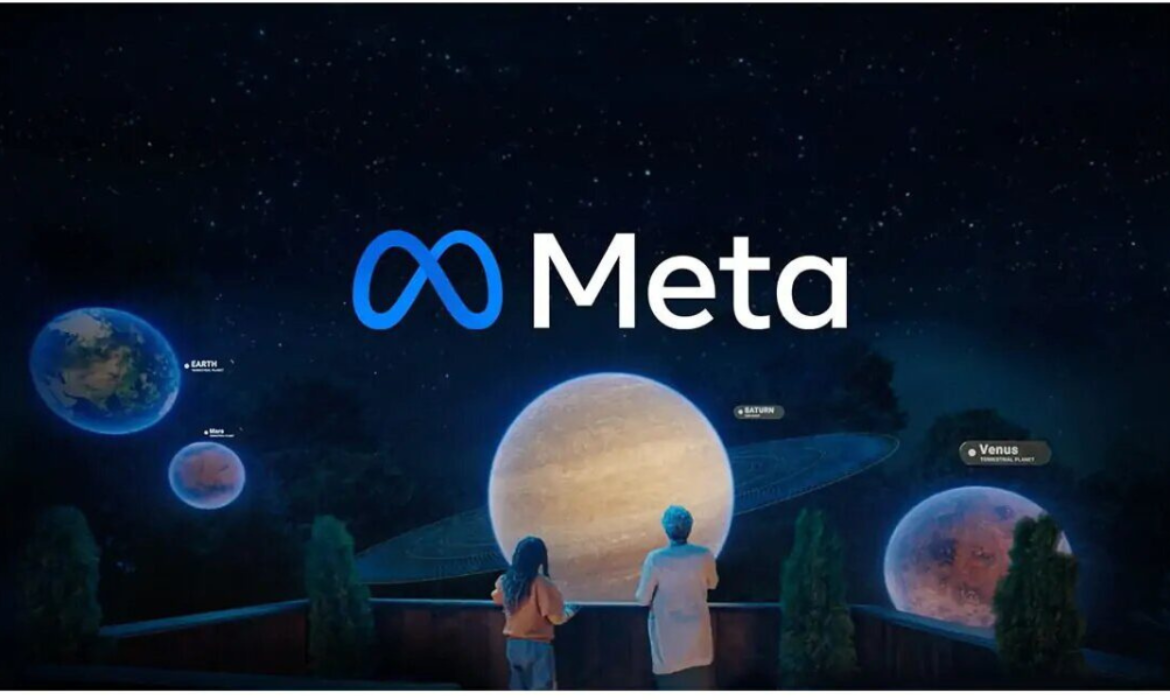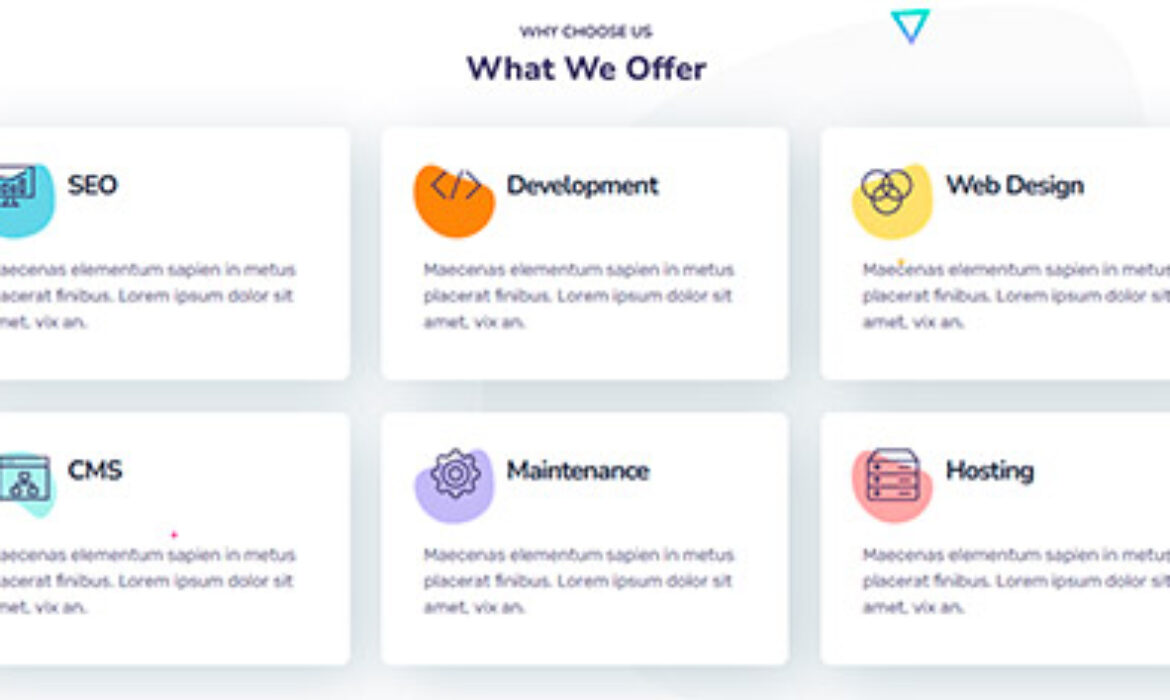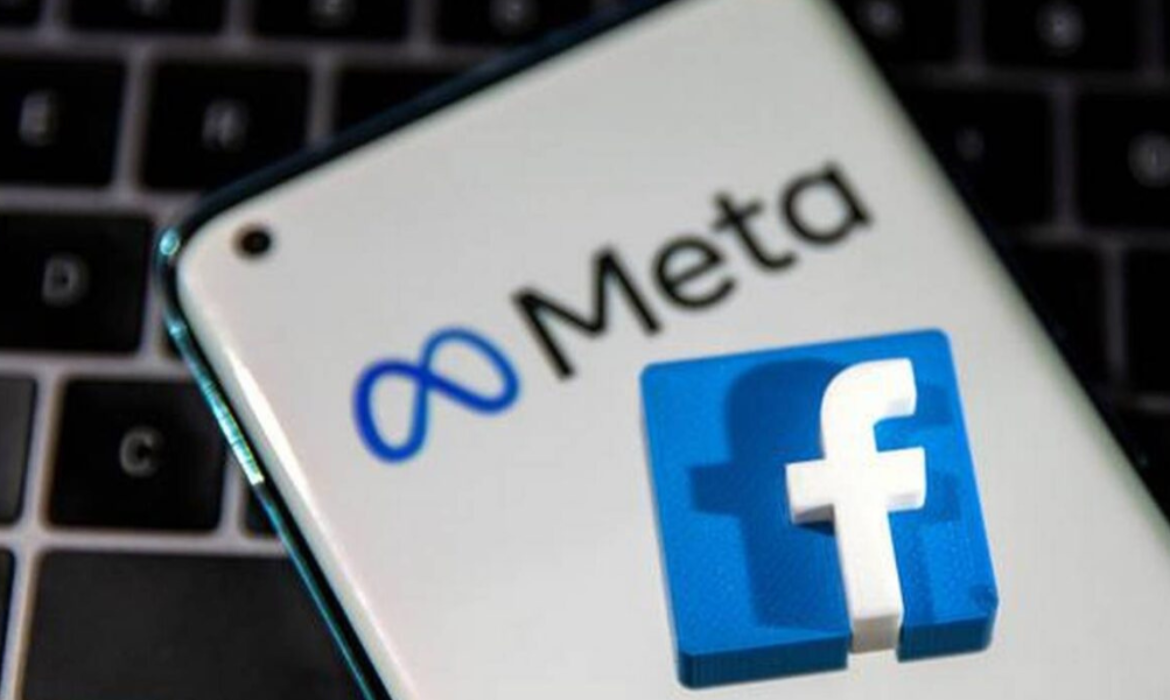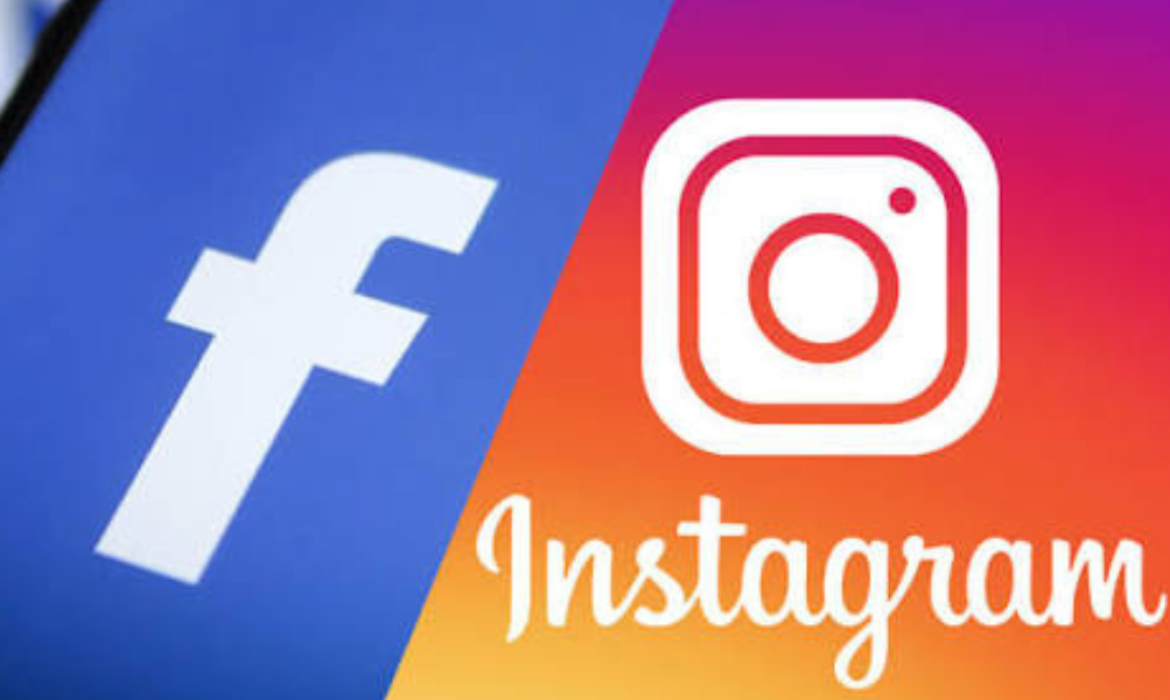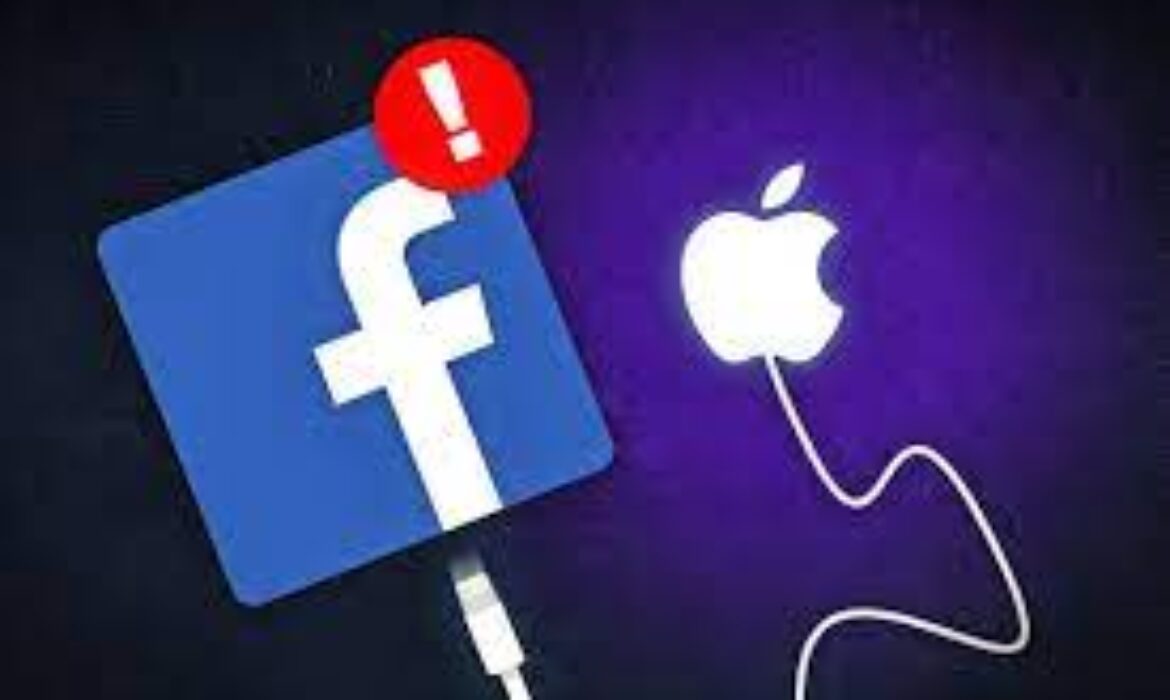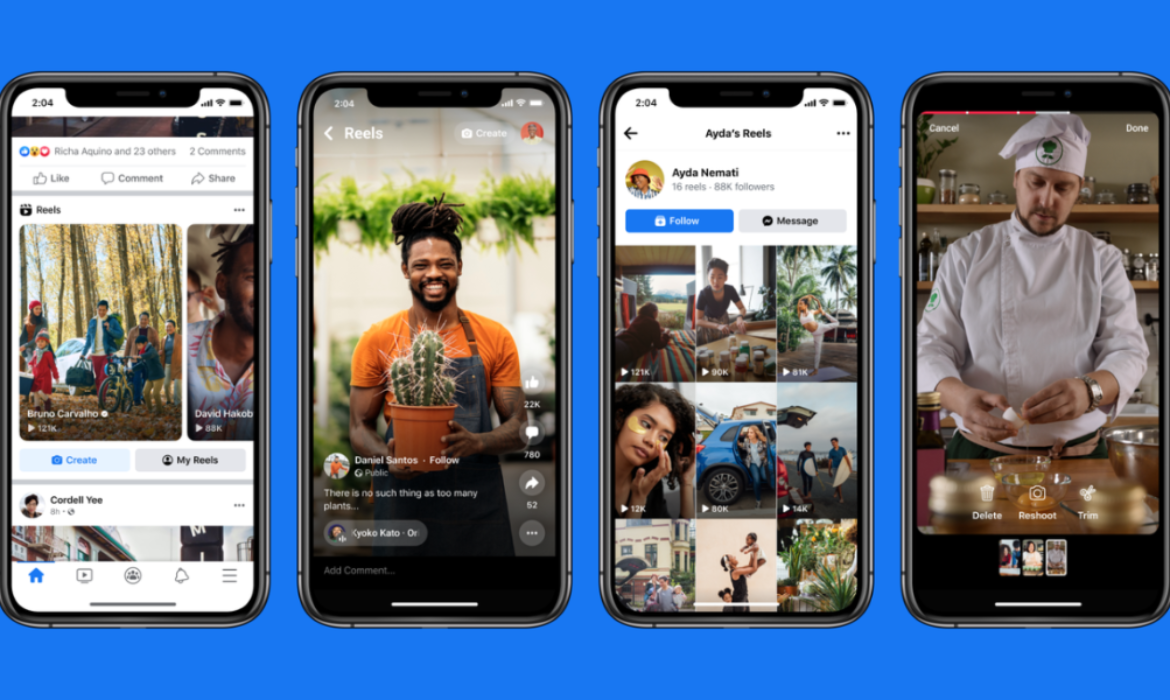Meta and Amazon Collaborate for In-App Shopping in FB and IG
Amazon and Meta have partnered to make it easier to connect Facebook and Instagram accounts to Amazon. Customers will be able to purchase merchandise featured in their feeds without ever leaving the mobile app thanks to this. Interestingly, users can deliver goods to their chosen Amazon mailing addresses and complete transactions using their saved Amazon payment information. Only certain products that are promoted on Facebook or Instagram, either by Amazon directly or by independent sellers on Amazon’s storefront, are eligible for this in-app shopping feature. Meta can facilitate the process of allowing retailers to sell products on Facebook and Instagram without having to set up unique storefronts on those platforms by collaborating with Amazon.
The in-app shopping feature
This feature is referred to by the company as “Purchase with Amazon without leaving Facebook or Instagram.” A related support page has also been updated. India cannot currently access the page, but it is still accessible in the United States. The goal of this change is to prevent users from leaving their feeds while making purchases on Amazon, keeping them inside the app.
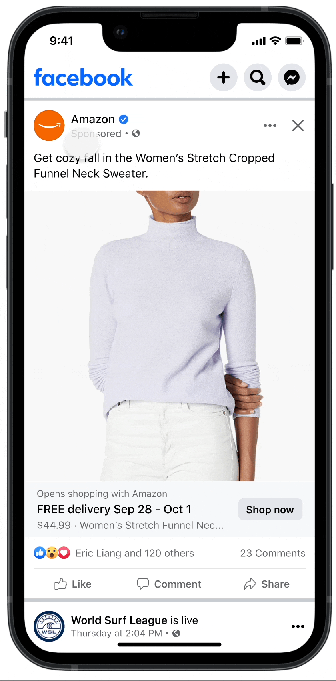
Image credit- TechCrunch
Users must complete a quick one-time setup in order to link their Amazon account to their Meta account (either Facebook or Instagram). Customers can easily make an Amazon purchase from the product ad after this is set up, without having to exit the Facebook or Instagram app. After that, the payment details and default shipping addresses that are saved on Amazon are used to finalize the sale.
Read More: Meta Contemplates Ad-Free Subscriptions, Targeting Indian Market
Benefits for advertiser
Users of Meta can now click on advertisements on Facebook or Instagram to visit a shop-like experience within the apps, making purchases simple and quick. Customers can make purchases using their linked Prime account without providing credit card information.
Improved ad signals: In order to boost customer investment, Meta receives more ad signals from the top online retailers and more attributed conversions.
Higher transaction fees: Due to its superior mobile discovery and ads engine, Amazon receives higher transaction fees than other retailers, which translates to more sales on its platform.
Increased conversions: With an extra sales channel and a 1:1 measurement between their most likely top ad platform and retail partner, merchants can increase the volume of conversions they generate.

Image credit- ITP Live
How will the in-app shopping feature help Meta and Amazon?
In an effort to increase ad revenue in the wake of Apple’s 2021 iOS privacy changes, Meta has decided to incorporate Amazon into its apps. It had an effect on both the digital ad market and Meta’s operations. However, the business recovered in 2023 following three quarters of declining revenue. According to Meta, the company’s investments in artificial intelligence have enabled it to attract retailers who are seeking to provide customers with personalized promotions.
Through their partnership, Meta and Amazon are able to profit from the benefits that each other offers. With its intent-based business strategy, Amazon can increase its market share. Moreover, it can assist retailers in attracting new clients who might not have actively looked for their goods. On the other hand, users can get targeted ads from Meta without having to actively search for them. This is thanks to its discovery-based business model. Data integration between the two platforms could be a crucial component of this. It includes Meta and Amazon sharing at least some insights that could better inform relative marketing strategies, ad performance, etc.
Amazon’s previous integrations
Amazon’s integration with Facebook and Instagram comes after a similar, mutually beneficial partnership between Pinterest and Amazon. Signed in April, the multiyear agreement between Pinterest and Amazon ads aims to increase the amount of shoppable content. Furthermore, it looks to improve the platforms’ selection of relevant brands and products. It also establishes Amazon as Pinterest’s first-party advertising partner. The collaboration may make it easier for customers to make purchases.
Here’s what they said
Amazon spokesperson, Callie Jernigan said
For the first time, customers will be able to shop Amazon’s Facebook and Instagram ads and check out with Amazon without leaving the social media apps. Customers in the U.S. will see real-time pricing, Prime eligibility, delivery estimates, and product details on select Amazon product ads on Facebook and Instagram as part of the new experience.
Read More: Meta Announces Five New Lead Generation, AI Powered Tools for FB, IG
Meta’s Horizon Worlds Expand to Mobile & Web Via Closed Beta Test
Despite previous reports claiming that less than 1,000 DAUs are using Meta’s $36 billion virtual metaverse platform, the company has released a closed beta test of Horizon Worlds for cellphones. The tech behemoth continues to work on bringing Horizon Worlds to mobile and the web. Similar to Rec Room, it allows users to design their own VR social games and experiences by placing and rearranging shapes using controllers. In order to create fluid functionality, it also offers a visual coding system.
Joining a queue for the closed beta test will give people another entry point into Meta’s virtual reality social setting. Meta anticipates that soon users will interact with their avatars in a variety of brand-new ways for a growing number of activities. It will welcome them into the larger metaverse experience and promote more VR adoption. The firm explained on the registration site that “more worlds are coming soon,” adding that “we are slowly rolling out worlds to mobile and web users as we ensure a great experience on mobile and web.” The firm’s virtual reality world, named Super Rumble, will soon be available on both mobile and web, it added.
Read More: Meta Adopts Consent Policy for Targeted Ads Data in Europe
Horizon Worlds on Mobile and Web
More people will be able to interact in Meta’s cutting-edge digital world thanks to the release of Horizon Worlds on mobile. It is anticipated that it will serve as the starting point for advanced social interaction. It will work like smartphone gaming apps, allowing users to move their avatar around the screen and communicate with other VR players. Although the lack of legs in the VR avatars continues to cause players to despair, Meta is still ironing out some of the presentational quirks.
Horizon Worlds will be accessible on Android devices via the current Meta Quest app. However iPhone users can only utilize the web-based version. This is probably because of Apple’s policy prohibiting apps from serving as games.
A look at Meta Horizon Worlds Mobile (running on Pixel 6a) pic.twitter.com/c4eJHJJG7o
— Luna (@Lunayian) August 25, 2023
Read More: Advertise Your Brand in the Metaverse: The Future of Digital Advertising
Super Rumble – the only accessible game
Super Rumble is the debut arena-style shooter game to be made available on mobile devices by Meta’s first-party company Ouro Interactive. Additionally, it is the only Horizon World currently using TypeScript, 3D asset imports, and the platform’s anticipated next generation creator tools.
Meta on bringing games to mobile and the web
Mobile and online development for Meta’s virtual reality game platform is still in its infancy. They are also aiming to make more worlds accessible. As they keep testing the experience, Meta clarifies that not all content will be accessible to everyone. Meta will have a better chance of growing Horizon Worlds’ user base by bringing problematic apps to mobile and online devices. Additionally, it will have a chance to achieve its long-term objectives of increased metaverse development and broad VR acceptance.
Meta wants to tap into how the next cohort of consumers are used to conducting their regular social contacts through mobile connections in a game-like environment. Nowadays, kids don’t ride bicycles to a nearby park to meet up like they used to. Instead, they now connect with their buddies mostly online in game environments like Fortnite, Roblox, and Minecraft. According to Meta, the next gen will be eager to broaden such interactions into a wider range of activities. Consumers may eventually transition to bigger settings and immersive VR experiences thanks to the Horizon Worlds mobile experience.
Advancing to the next phase
Recent media attention has focused on Meta’s planned release of their Quest 3 VR headset. It is scheduled to go on sale this fall. Meta is attempting to attract curious mobile users and VR players. It is releasing the new generation headset concurrently with the Horizon smartphone application. It is a vital step towards promoting the metaverse. The metaverse may still be on the horizon even though it hasn’t yet attracted the attention of key adopters. Another bridge leading to the next level is this one.
Read More: Lemma and Maxamtech partner to offer real-world DOOH clients Metaverse Billboards
Advertise Your Brand in the Metaverse: The Future of Digital Advertising
The world is expanding beyond the physical boundaries of humans. Metaverse is one such example! Metaverse is a virtual world that can be accessed using augmented reality and virtual reality headsets.
Facebook Introduced Metaverse to make social interaction realistic. Although events happen in virtual reality, they feel natural. It has opened numerous doors of opportunities for businesses across the world. Users are purchasing lands, and building real estate by creating their avatars. Therefore, it opened a doorway of opportunities for brands to advertise their products.
Metaverse has generated numerous possibilities. Brands are eager to grab this opportunity and explore futuristic ways to create an everlasting impact on their audiences in this new virtual universe. Thus, the time is opportune to get started and establish a milestone in the metaverse.
The concept of the metaverse is not new. It was first coined in the year 1992 in a science fiction novel “Snow Crash”. The term was used to describe a fictional or advanced universe. A virtual land filled with opportunities!
Since then, the word creates an image in the mind of readers painted with the world of a sci-fi movie. It created an image of new possibilities and advancement. As we proceed, we will discuss the area of possibilities and opportunities of advertising in the metaverse.
Guide to getting started with advertising in the Metaverse
Image credit: Twitter
We have learned that the metaverse is an augmented reality designed by humans to expand the horizon of their experiences. Virtual reality promises far more than what we can experience in our physical reality. Therefore, it will not be false to say that advertising will require additional efforts in the virtual world.
Metaverse is a promise! It is a leap in the future beyond imagination. Therefore, to make your brand worthy of advertising in the Meta-universe, brands must re-invent. They must re-think and re-evaluate their brand following the new reality. Advertisers must design their campaigns following their virtual audiences.
Metaverse has been evaluated to be a trillion-dollar market. No one can have it all! Thus, everyone will get a chance to sustain the audience by using the best creative minds in the market.
Factors to be considered before advertising in Metaverse

Image Credit: sensorium
Before we get started with our advertising endeavor in Metaworld, we must understand the area of opportunities. As every game has its own rules, so does metaverse. Here we are listing some key categories that one can try their hands on if they are planning to start their journey with advertising in Metaverse.
Expansible: Metaverse is a multi-million business due to the presence of millions of people on the platform. People are creating their avatars and coexisting in the metaverse.
Easy to access: The world is accessible to all without any boundaries. You can be of any age and ethnicity. You can belong to any region or background, metaverse will provide you with similar opportunities.

Image Credit: Mashable
Social hive: Metaverse is the key attraction for people. Everyone in the metaverse is trying to explore possibilities. Therefore, this could be the best time for brands to step in and establish themselves through fine-crafted advertising in the virtual universe.
Unique content: Users are using interactive and immersive content. It is helping to shape the virtual reality of the metaverse. Users are exploring the boundaries of the Metaverse and trying to achieve goals that they find unattainable in the physical world.
Patching the gap: Metaverse gives their users a real-world experience where they can interact with one another, explore products and enjoy the services. Therefore, this makes the metaverse a perfect place for advertising.
Understanding Metaverse:
Before we start advertising in the metaverse, it is crucial to understand the basics. These basics will help advertisers to portray their products effectively. The word Metaverse is a combination of “Meta” meaning beyond, and “Verse” meaning universe. It is often defined as the land of opportunities and origin. Using the virtual world as a platform to portray their products, brands will no longer be enslaved or will feel bounded. They will have maximum opportunity to sell their products to the consumers.
The possibilities in the metaverse are endless, and users can multitask. It gives the virtual world an edge over the physical world. For example, users can purchase from their favorite brands while attending concerts or dining at their favorite restaurants.
Here are some terms that advertisers should familiarize themselves with as they start advertising in the metaverse.

Image Credit: xGuru
Virtual Reality (VR): Virtual reality is a simulated reality created using a 3D technique. It is similar to a hologram. However, unlike a hologram, people can see their projected avatars and other avatars in a 360-degree virtual simulated environment. Using head-mounted devices (AR/VR) users can sense, feel, and get audio feedback. This experience is interactive and immersive.
The technology is still maturing, and we might get past the limitations of VR headsets in the future.
Augmented Reality (AR): AR is a technology that uses computer-generated imaging. These images are superimposed to achieve a single image. This image occupies physical space in the real world. To enhance the immersion, sound and visuals are added.
Mixed reality(MR): Using the technology of AR and VR, mixed reality is designed. Mixed reality lets users interact with artificial content in the real world. AR and VR are the components of mixed reality. These create a bridge between the real and digital worlds.

Image Credit: Zentao
Extended Reality (XR): Extended reality is a step forward. It is created by immersion in AR, VR and MR technologies. XR enhances the experiences through a bridge between human and machine interaction.
Image Credit: Indian Express
Avatars: The word is self-explanatory, and most of us have already seen the movie “Avatar”. The phenomenon is the same as it was in the movie. In the metaverse, one can create an avatar and experience virtual reality using these avatars.

Image Credit: Leeway Hertz
Blockchain: A method enabling digital security and storage of digital data. This data can be stored on a local server or over the cloud. The technology has been proven successful and empowers cryptocurrencies like Ethereum and Bitcoin. It has also proven to be helpful in the succession of NFTs in the metaverse.

Image Credit: IndiaTV
Cryptocurrency: Cryptocurrencies are virtual currencies. They are used for payments in the virtual world. These currencies are usually stored in digital wallets. To make the storage and transaction secure blockchain technology is used. Some common examples of cryptocurrencies are Ethereum, Bitcoin, etc.

Image Credit: LeewayHertz
Non-Fugible Tokens (NFTs): These are unique assets(digital) stored in blockchain. These represent real-life products/items such as art, music, and other collectible items. You will gain true ownership of these items in the digital world.
Trends Of Advertising In Metaverse
We have already understood the scope of opportunities and possibilities in the metaverse. However, it is crucial to understand the ways and trends that will help us to advertise in the virtual world. Metaverse is still at its inception. It will not be unjust to say that it is still a sampling, and calculating its true potential will not be justifiable. Therefore, in this evolving technology one must understand the ongoing traits and trends.

image Credit: Social Samosa
Virtual Influencers: We have already seen the power of influence marketing. Platforms like Tiktok, Instagram, Facebook, and Snapchat have already proven the possibilities and impact of influence marketing. Similarly, metaverse empowers brands to choose their favorite influencers and create a high-impacting campaign. These campaigns are not only effective but also cost-efficient. Dior, Valentino, and Calvin Klien are using influencers like Imma, Shudu, and Lil Miquela to advertise their products in the virtual universe. R3 a marketing consultancy has already emphasized the impact of influencer marketing in the metaverse. Therefore, it is a proven technique to establish your brand in the virtual universe using influencer advertising.
Events In Metaverse: We all understand the value of advertising at major events. Concerts, summits, Super Bowl, and sports events gather huge audiences. Therefore, placing your products or campaigning with a full-time advertisement help to create an impact on consumers.
Ariana Grande, Lil Nas, and Travis Scott’s concerts gathered millions of fans. Hence, creating huge revenues for the brands.
MetaCommerce: People love to follow trends not just in the physical world but also in the metaverse. Users are spending money to recreate their avatars. They are spending money to purchase all types of products, clothing, and accessories with the help of the in-app purchase. The in-game purchase market has already seen huge success. The in-game purchase market is already predicted to surpass the milestone of 74.4 billion USD.

Image Credit: Campaign Asia
Similarly, Metaverse is also seeing a high demand for in-app products that users are purchasing to recreate the value of their avatars. Metaverse is also monetizing the products using its economic currency used to exchange goods. The currency used is NFTs, and brands like Coca-Cola, Tommy Hilfiger, Wendy’s, Samsung, and Gucci are offering their NFTs in the virtual world. Users can also the NFTs are non-fungible tokens supporting virtual economies. They can protect their ownership of products using NFTs.
Direct Advertising in Metaverse: One of the oldest and most eye-catching ways of advertising is digital advertising. We all can agree that this old and proven method is not going to vanish any time soon. Virtual platforms are already providing virtual billboards, and brands like Samsung, Coca-Cola, Adidas, and Balenciaga are already trying to grab all the attention by capturing the maximum presence that they can get their hands on.

Image Credit: Supply chain brain
Wrap Up
- Metaverse is at its primitive stage, and several developments are going to happen with time. People are still trying to figure out the most suitable ways to gain the best out of it. Therefore, creating a footprint in the metaverse is easy at this stage of its evolution.
- Continuous study of the latest trends and areas of possibility will prove to be beneficial in the long run perspective.
- The possibilities are endless! As there are no barriers to creativity one can explore multiple dimensions of opportunities and enhance the user experience by providing them with a hassle-free journey through their products and services.
Meta Consolidates Automated Ad Products Under Meta Advantage Portfolio
Meta is consolidating all of its automated products under the ‘Meta Advantage’ umbrella. The new suite is the home to Meta’s existing automated tools such as Detailed Targeting Expansion, Automatic Placements or Automated App Ads as well as future automated products in the works.
The new suite, Meta Advantage will help advertisers to easily identify and benefit from Meta’s ad offerings. Goksu Nebol-Perlman, VP of Product Marketing, Ads & Business Products Meta said in a blog post that 77% of advertisers testing its automated products saved several hours per week by using them. She further added,
“Automated ad products help to improve the performance of your ads by relying more on machine learning, such as automatically finding the most relevant audiences or ad placements. They also allow you to further simplify optimizing campaigns, so you can worry less about managing campaigns and get back to running your business.”
Interesting Read: Meta Taps Zefr For Brand Suitability And Improve Advertising Safety Tools
Still reticent and reluctant!
Despite Facebook, and now Meta, pushing advertisers to embrace automation (Google has also been doing so), there has been reluctance from advertisers along the way. The platform claims that machine-learning-powered ad products reduce manual work and yield better results at lower prices. However, some buyers are turned off by the lack of control and transparency.
Regardless, the trend toward greater automation is clear, and it’s best to go with it.
What’s new in Meta Advantage?
There are 2 kinds of Advantage products in the suite. First, those features marked “Advantage” help advertisers to enhance a specific aspect of manual campaign setup, such as the selected detailed targeting options within your target audience. Second, those products marked “Advantage+” allow automating an entire campaign flow or an entire core step of manual campaign setups, such as placements or creative.
Meta Advantage aims to provide three key benefits to advertisers- Optimization, Personalization, and Efficiency.
Features under the Meta Advantage umbrella include:
- Advantage Lookalikes: (currently known as Lookalike Expansion) It allows Meta to automatically reach a broader set of people beyond the set parameters in the advertiser’s lookalike audience. Meta studies show when using Advantage Lookalikes, Website or Mobile Custom Audience seeds saw a 17.3% decrease in median CPA. On the other hand, Customer List Custom audience seeds saw a 10.1% decrease.
- Advantage Detailed Targeting: (currently known as Detailed Targeting Expansion) It uses the advertiser’s targeting preferences: demographics, interests, and behaviors as a guide to finding better performance opportunities outside of a defined audience.
- Advantage+ App Campaigns: (currently known as Automated App Ads) This product uses machine learning to deliver creative variations to the most appropriate audiences and placements based on Meta’s ad systems.
- Advantage+ Placements: (currently known as Automatic Placements) Meta algorithms find the most effective placement for a given ad in order to maximize performance. Showing ads across 6 or more Placements— such as Facebook Marketplace, Instagram Stories, Reels—gives Meta’s system more flexibility to control costs and provide better results.
- Advantage+ Creative: (currently known as Dynamic Experiences) It automatically bundles a set of creative optimizations into a single entry that can improve ad performance.
- Advantage+ Shopping Campaigns: (currently known as Automated Shopping Ads) Meta plans to add it to the suite by end of the year. It optimizes across multiple campaign levers- creative, targeting, placement, budget, and other campaign levers to find the best opportunities to drive conversions with minimal efforts.
The product is in the beta phase now. Goksu Nebol-Perlman concluded,
“Wherever you see the name Advantage, you can be sure you’re getting our most advanced automation and machine learning technology designed to help you create and deliver your most efficient campaigns. As we progress through 2022, we will continue to update you on how to increase your performance on our platforms and ensure that you’re able to build and grow your business.”
Interesting Read: The Ultimate A-Z Glossary Of Digital Advertising!
Facebook On TikTok With Verified Account
Social platforms setting up shop on other social platforms and the latest example is Facebook is on TikTok. Astonished? Is this your next thought – what’s Facebook doing on TikTok? Buying ads or just another social account on TikTok?
We’ll know soon enough because the social networking company has set up its own TikTok account. The account is verified and had roughly more than 15,000 followers at the time of this post, but it had not shared any videos or other content, save for a link to the Facebook application on Google Play.

Image Credit: Tech Crunch
A Meta spokesperson said,
“Brands leverage a variety of channels, including some of our social media platforms, to reach and engage with the people using their products and services every day. “Our intent with establishing a brand presence and cultivating community on platforms like TikTok or others is no different.”
Don’t be surprised!
The different social platforms often have accounts on each other’s sites and apps. For example, Meta on Twitter provides regular news and updates. A Pinterest account on Facebook promotes its ads in several languages. Well, TikTok also has an Instagram account with 26million followers to promote the content.
Likewise, Facebook may be looking to boost its Gen Z user base by leveraging TikTok (or its ad platform) after recently reporting flat growth in monthly active users in its last quarter. With the decline in Facebook’s popularity, they might be building a content strategy, especially for the younger generation.
Another likely factor is Facebook…Errr…Meta is delving deep into the metaverse, and the Roblox user base is primarily 25 and under, with a sizable proportion of people aged nine to sixteen. The fact that large brands utilize various channels for marketing and communication makes it a little amusing to see Facebook pop up on TikTok. However, TikTok gives Meta a way to connect with younger users that aren’t on Facebook or Instagram today.
It will be interesting to witness the content of Facebook on TikTok. Well, isn’t it Meta now?
Facebook Provides Advertisers More Safety Controls In The News Feed
Meta formerly known as Facebook is enabling brands with more control over the placement of their ads in the NewsFeed. In a blog post, it said,
“We’re introducing a number of controls designed to give people and businesses the ability to tailor their News Feed experience.”
New News Feed Controls Added For Advertisers
As part of its NewsFeed updates, the company unveiled a brand suitability verification tool for advertisers. Additionally, it expanded the topic exclusion controls to a limited number of advertisers that advertise in English.
The controls will be in the “Ads Preferences“ settings tab, which will allow advertisers to select a topic to help define the way ads appear on Facebook, including in News Feed. Advertisers can select three topic categories – News and Politics, Social Issues, and Crime & Tragedy. Advertisers who have selected one or more topics will not see their ads in the News Feed of people with recent engagements on those topics.
Interesting Read: Facebook Changes Counting Policy For Ad Planning And Measurement
In early testing, Meta found that advertisers who excluded the News and Politics categories were able to avoid adjacency 94% of the time. Tragedies and conflicts (99%) and debated social issues (95%) saw similar results. The company said,
“From our conversations with the industry, we know that this solution may not solve the needs of every advertiser and that some advertisers are looking for content-level granularity.”
With this product, Meta intends to bridge the gap between what they offer today and hope to offer in the future – content-based controls. It is exploring and testing a new content-based suitability control that will be designed to address concerns advertisers have about their ads appearing in Facebook and Instagram feeds next to specific topics based on their preferences.
“We aim to design our exploration in line with the Global Alliance for Responsible Media (GARM) Suitability Framework.”
According to the blog post, Meta expects to launch a new control in 2022 and to start updating them in Q1.
Interesting Read: Facebook Plans a Privacy-Focused Approach to Rebuilt Its Ad System
Third-Party Collaboration For Placement Verification
Facebook plans to work with third-party brand safety partners before year-end to “develop a solution to verify whether content adjacent to an ad in News Feed aligns with a brand’s suitability preferences.”
New And Customized News Feed Controls For Users
Meta allows users to have more control over what shows up in NewsFeeds, allowing them to minimize the content that they see from friends, relatives, groups, and pages. Also, using the unfollow, snooze, reconnect and disconnect buttons will be easier. Eventually, Meta plans to test the features globally on a small percentage of users.
Also Read: Facebook Failed To Detect A Bug In Its Conversion Tool For A Year!
Facebook Changes Counting Policy For Ad Planning And Measurement
Facebook outlined a significant change in a new update to how it counts user accounts when planning and measuring ads. The tech giant will treat users who do not have their Facebook and Instagram accounts linked in Accounts Center separately for ad metrics. Whereas, accounts that are connected in the Accounts Center will be counted as one person. The new update will roll out in the next few weeks. The privacy-centric course correction is likely to help advertisers to reach more accounts.
Interesting Read: Facebook Advertisers Battle Ad Results After Apple’s Privacy Changes
Graham Mudd, Vice president of product marketing for ads explained in a blog post that before Facebook counted users with multiple accounts as a single person for ad purposes. They counted them only once if their Facebook and Instagram accounts were linked via those apps or believed that the same person used both. For instance, people who accessed Facebook and Instagram via the same device or shared the same email address across the two platforms were counted as one person when they interacted with ads.
It makes sense for Facebook to honor this choice for ad purposes proactively. As a result, it will not get called out later for linking accounts without the user’s knowledge. Graham Mudd wrote in the blog,
“This update aligns with trends of offering people more control over how their information is used for ads and is consistent with evolving advertising, privacy and regulatory environments.”
Interesting Read: Why Facebook thinks Apple’s iOS 14 privacy push will have a severe impact on business
How Will This Affect The Advertisers?
Earlier in June, Facebook informed advertisers of how users will be counted, which includes in-product notifications. With this new update, Facebook will rely on preferences from the Accounts Center – like whether accounts are linked or unlinked – to inform advertisers’ planning and campaign measurement.
In the blog post, Graham Mudd said that advertisers won’t see a substantial impact on reported campaign reach. However, noted that keeping unlinked account holders separate for advertising purposes, advertisers may see an impact on campaign planning estimates and performance reporting for unique metrics. Advertisers can see increases in their pre-campaign estimates, including estimated audience size.
Facebook has recently retitled the ‘potential reach’ metric as ‘estimated audience size’. It will now display a range of numbers to advertisers for their marketing campaigns instead of a specific number. In this way, Facebook is responding to ongoing lawsuits over how it calculates potential reach.
Interesting Read: The New World Of TikTok Marketing, Everything You Need To Know!
Facebook Advertisers Battle Ad Results After Apple’s Privacy Changes
A reporting glitch in Facebook’s ad results on Apple iPhones has created trouble for brands. Apple’s new privacy rules are making it difficult for Facebook advertisers to even conduct basic analysis and send faulty data about the campaigns.
There is inaccuracy for a simple study like understanding whether the person who saw the ad and made the purchase is the same or different.
Facebook has been fixing its ad platform ever since Apple started cracking down on tracking on its iPhones. Last week, Apple reported a bug last week where some advertisers received incomplete information that affected in-app installs, also known as conversions. Apparently, Facebook underreported the downloads and how well the ads worked for the marketers that ran on certain iPhones.
Similar News: Facebook Failed To Detect A Bug In Its Conversion Tool For A Year!
Facebook Advertisers & Data Dilemma
As stated to Adage, Jeff Richards, a paid media consultant who manages digital advertising for multiple brands explains the challenge for brands with an example: A brand recorded 20 conversions on their website and they correlated to the Facebook ad campaign.
However, Facebook Ads Manager reported zero conversions. This means no return on its ad dollars which was opposite to the reality. It was clear that consumers were shopping. A complete mismatch of data!
Facebook had earlier informed the marketers that the flaws in data reporting are fixed and advertisers can see high conversion values. A note obtained by Adage said, “We will be expanding modeled reporting for Website Purchases Conversion Value.”
Similar News: Apple In-app Purchase Policy – Understanding The Pros & Cons
Website Purchases Conversion Value is a system used by Facebook to track the total value of sales on an advertiser’s website after people viewed or clicked on a Facebook ad. This is invaluable data that is being inaccurately reported due to Apple’s privacy changes.
The exact reason Facebook was not able to see all the conversions was because Apple made recent changes to its operating system and implemented new privacy changes which led to less information from devices for developers like Facebook. Facebook’s note further stated,
With this update, statistical modeling will be used to estimate associated values of additional modeled conversions where events cannot be observed directly (for example, where conversion data may be partial or missing due to data transmission limitations)
As a result, you may see an increase in reported conversion values and other associated metrics like This update should help our bidding system learn from more representative data, which should then lead to more efficient performance
What’s The Way Out For Facebook Advertisers?
In order to fix this, Facebook is constantly communicating with the advertisers and helping them navigate through the uncertainty, and working on new ad measurement programs using “privacy-enhancing technologies.” Facebook’s fix of using statistical modeling is a ray of hope for many brands to regain brand visibility.
The measurement data is important for brands as it will help them to decide which campaigns to invest in and which to pause.
This is a highly crucial situation for Facebook and needs to find new ways to measure ads on iPhones as every single conversion matters. At the same time, Apple and Facebook should resolve their business differences for the betterment of all the parties involved.
Also Read: You Can Now Charge For Tweets With Twitter’s New ‘Super Follows’
Instagram Rolls Out Ad Feature To The Shops Tab Globally
Synopsis:
- Instagram launches the ad feature in the Shops tab globally
- Users can click on the Instagram Shop Advertisment to browse or view product details or save the product to the personal wishlist.
- This marks the latest update of Facebook’s ongoing commercialization strategy to monetize every segment of its social media empire.
Instagram announced the launch of ads in the Shop tab globally, rolling out in countries where Shop Tab has already been in operation. The aim is to earn more advertising dollars from brands hoping to reach new customers. The global roll-out allows brands to showcase their products to a larger audience who are already in a mood to browse.
This marks Instagram’s latest update in the ever-evolving and booming social commerce space. The photo-sharing app already has adverts sprouting on Reels, Stories, individual feeds, or suggested posts. Instagram Shop is a photo and video sharing app tab that allows users to browse items like clothing and beauty products, and let them buy directly through the app.
In the new feature, advertisements will appear as tiles on the Shop Tab, enabling the user to click on the ad and directly navigate to the product detail page, from where the potential buyers can read up and check additional photographs. The user can also browse other products of the respective brand. If a user does not want to purchase the product immediately then can save the details on a personal wishlist or share them with friends.

Credit: Instagram
Instagram has previously tested Shop ads with a few U.S advertisers like Away, Donny, Boo Oh, Clare paint but now is open to brands globally. As reported by Tech Crunch, these ads will launch with an auction-based model and only appear on mobile as Shops is not available on the desktop.
Facebook Tests ‘ Reels’, Similar To Short-Form Instagram Reels Video
Facebook is running a limited test ‘Facebook Reels’ in the U.S. The new feature is the parent company‘s version of the short-form Instagram Reels video. Facebook Reel will allow Facebook users to create and share short-video content directly within their News Feed or Facebook Groups.
The social media giant is already running a similar test in India, Mexico, and Canada whereas the limited rollout in the U.S is an extension of the test. The test will enable Instagram users to cross-post their reels on Facebook.
Facebook Reels Creation Tools Similar To Instagram
Facebook users in the test group can tap the ‘Create’ button from the reels section in their News Feed and access a standard set of tools similar to those on Instagram including video capture, camera roll import, music selection, and timed text.
Audio options for Facebook Reels include Facebook Music Library, record original music, or using music from others Reels if set ‘public’. Other features comprise many augmented reality effects created by Facebook or third-party, editing tools like a timer for hands-free recording, tools to speed up or slow down a part of audio or video.
Even though ‘most’ of the Instagram reels features will be available on Facebook reels, the Remix feature will be added later. Also, the user interface of Facebook Reels will evolve depending on the feedback to differentiate from Instagram Reels.
Facebook Reels Can Be Shared To All
After the creation of Facebook Reels, users can share it with Friends, specific audiences, or the public. It can also be shared with the members of Facebook Groups who share similar interests.

Credit: Tech Crunch
Users can check their past creations under the ‘My Reels’ option and can browse Reels created by others in the News Feed, Search, or Groups. Shared Facebook or Instagram Reels will be recommended to users based on popularity, interest, and engagement.
Why did Facebook Replicate Reels?
As a justification to the test, the company explained, “nearly half of time spent on the app is watching videos.” On Facebook’s earnings call, CEO Mark Zuckerberg stated that “Reels is growing quickly across all forms of videos and is the largest contributor to engagement growth on Instagram.”
It would be interesting to see whether people will dedicate the same time and effort to create content ‘Reels’ specially for Facebook.
Also Read: Facebook Plans a Privacy-Focused Approach to Rebuilt Its Ad System

